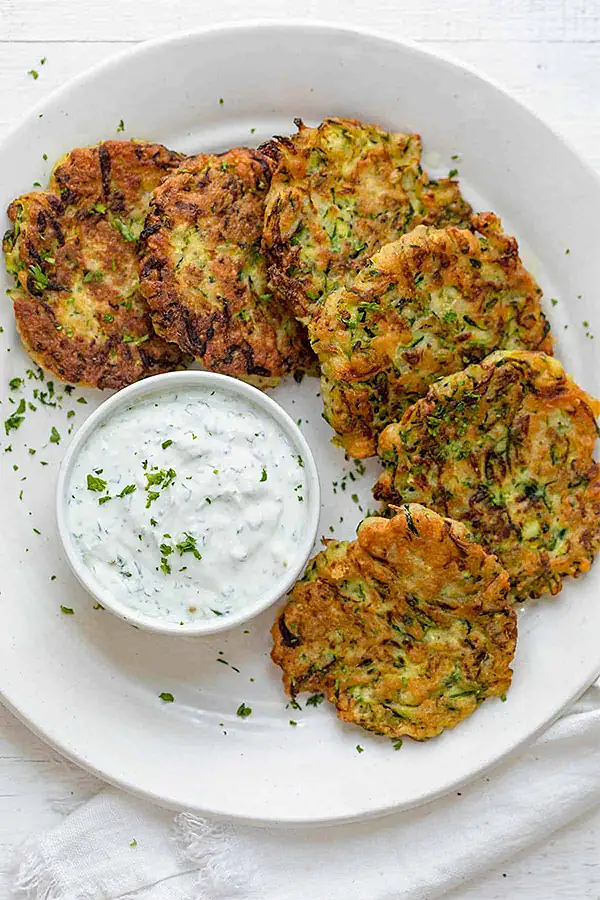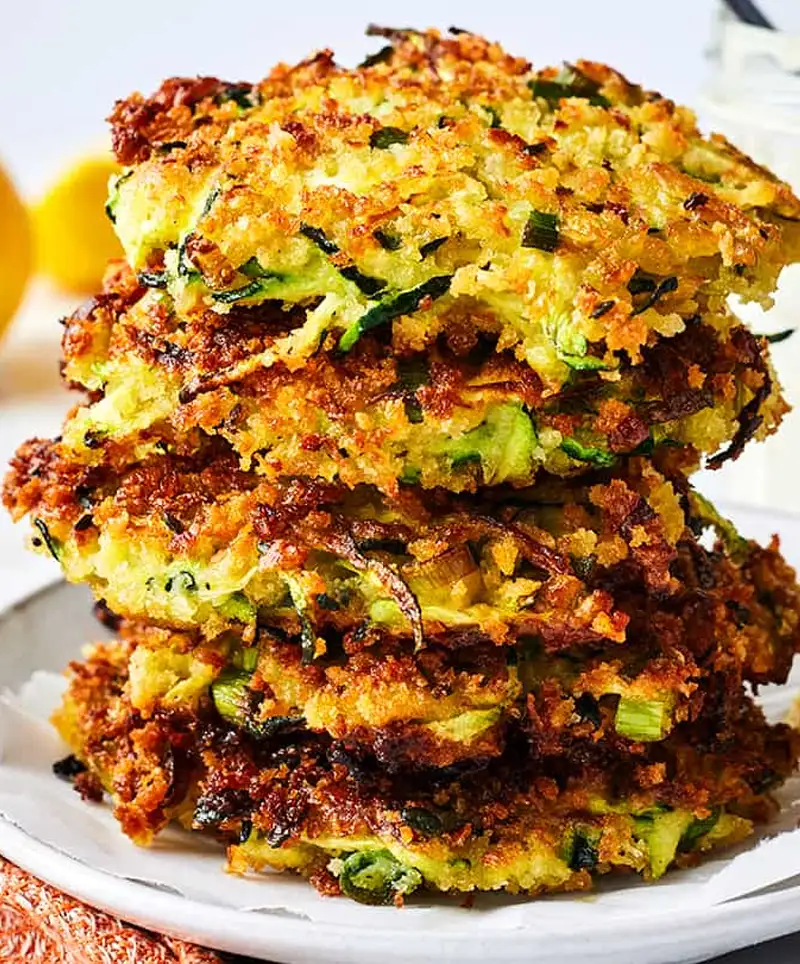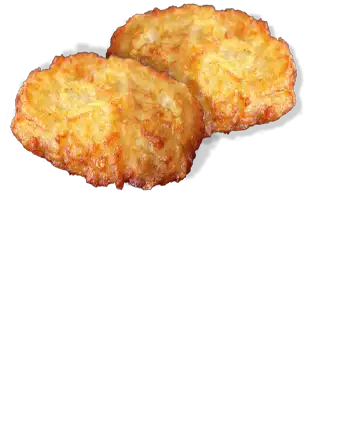National Fritters Day is not just a day; it's an excuse to pay homage to the mighty fritter, the culinary chameleon of the food world. This day goes beyond just wolfing down your favorite greasy treats; it's like a time-traveling, globe-trotting adventure, but with more oil and less jet lag. So, buckle up your taste buds; we're taking a deep-fried journey through the annals of history, culture, and flavors that have crisscrossed the Earth to celebrate this crispy, golden wonder!
A Brief History of Fritters
The fritter's history is as layered and fascinating as its many varieties. While we trace the first documented mention of fritters back to 1665, their story begins much earlier. Imagine Samuel Pepys, a notable British Member of Parliament during the Restoration period, jotting down in his diary his eagerness to indulge in fritters before Lent. This entry offers a tantalizing glimpse into the fritter's place in historical diets, but the journey stretches further back in time.
Let's wind the clock back to ancient Rome, where the humble beginnings of the fritter were likely set in motion. The Romans, known for their expansive influence across Europe, weren't just spreading their empire and sharing their culinary discoveries. Among these was the fritter, a simple yet delightful concoction that would have been a staple in Roman kitchens. The Romans had a penchant for experimenting with food, often frying various ingredients in oil – a technique that laid the groundwork for the fritter we know today.
As the Roman Empire expanded, so did their cuisine. Fritters, in their rudimentary form, traveled across the European continent. Each region, embracing this new culinary concept, began infusing local flavors and ingredients into these fried delights. This adaptability is perhaps why fritters found a home in many different cultures and kitchens. They were a canvas, ready to be painted with the culinary hues of each new culture they touched.
By the Middle Ages, fritters had become common in many European countries. They were no longer just a Roman novelty but had evolved into various regional specialties. In medieval cookbooks, recipes began to appear for these fried treats, showing their integration into everyday life. Fritters, with their simple base of batter and the endless possibilities for fillings, became a way for people to make the most of available ingredients, whether it was fruit from the orchard, vegetables from the garden, or leftovers from the previous meal.
As time marched on, fritters continued to evolve. By the time of Samuel Pepys in the 17th century, they were a recognized part of English cuisine, enjoyed by both the upper echelons of society and the common folk. Pepys' mention of fritters is more than just a diary entry; it's a testament to their enduring appeal and versatility.
Today, the fritter's journey has taken it around the globe, with each country adding its unique twist to this ancient recipe. From the apple fritters of North America to the savory pakoras of India, the fritter has become a global citizen, a dish that transcends borders and unites us in our love for something as simple yet profound as a fried batter. In all its forms, the fritter stands as a delicious reminder of our shared history and the unifying power of food.
Fritters Around the World
Fritters are the globe-trotting, shape-shifting snack that's made its mark in almost every cuisine on Earth. Let's embark on a whirlwind tour of how different cultures have taken this humble concept and fried it up into something spectacular.
 First stop, France! The French gave us beignets, the chic cousin of the fritter. These fluffy, pillow-like delights, often dusted with a snowfall of powdered sugar, are the stuff of Parisian café dreams. They're like little clouds of joy, proving that even when the French fry something, they do it with style.
First stop, France! The French gave us beignets, the chic cousin of the fritter. These fluffy, pillow-like delights, often dusted with a snowfall of powdered sugar, are the stuff of Parisian café dreams. They're like little clouds of joy, proving that even when the French fry something, they do it with style.
Next, we hop over to Italy, where the "bignè" reigns supreme. Don't let the fancy name fool you; these are fritters in a designer dress. Whether sweet or savory, bignè is like a culinary hug from an Italian nonna, filled with everything from rich custards to zesty cheeses.
Then there's Greece, where "loukoumades" steal the show. Picture this: little golden balls of dough, crispy on the outside, fluffy on the inside, often soaked in honey and sprinkled with cinnamon or nuts. They're the ancient Greeks' gift to the fritter world, and let's say they knew what they were doing.
Jetting off to Japan, we find tempura. Tempura is the sleek, sophisticated version of fritters introduced by the Portuguese and Spanish. It's like the fritter went to a spa and came out wearing a kimono. Whether it's vegetables or seafood, each piece is lightly coated in a delicate batter and fried to perfection, proving that sometimes, less really is more.
Now, let's spice things up in India with the pakora. This isn't just a fritter; it's a flavor explosion. Vegetables, meats, and even whole chili peppers are dipped in a spiced gram flour batter and fried to create a snack that's as vibrant and diverse as India itself. Pakoras are like the life of the party in the fritter world – always spicy, always exciting.
Back in Italy, fritto misto shows us that Italians don't play favorites. Seafood, vegetables, meat – if you can eat it, they can fritter it. It's like a carnival of flavors in one dish, proving that Italians really do know how to live la dolce vita, one fritter at a time.
And finally, for something a bit avant-garde, we have flower fritters. Yes, flowers! Because why stop at vegetables and meats when you can literally fry petals? These aren't just fritters; they're a botanical garden in a bite. Eating them is like frolicking in a field of daisies if they were deep-fried and edible.
Ultimately, what have we learned from our fritter-filled journey around the world? That no culture can resist the charm of frying batter into deliciousness. Fritters might be the universal language of yum, and let's be honest, who doesn't speak that?
Fritters in the United States
In the U.S., fritters aren't just a dish; they're a cultural phenomenon, especially when it comes to the beloved corn fritter. Picture this: golden, crispy, and embodying the very essence of American ingenuity and comfort food. It's as if sunshine and happiness had a delicious, edible baby.
Let's zoom in on the South, where corn fritters are practically a religion. Here, they're not just made; they're crafted with love, melted butter, milk, flour, egg, and corn kernels – the star of the show. These fritters are a testament to Southern hospitality, where more is more and fried is best.
Now, the beauty of these little golden nuggets lies in their versatility. You can bake them for those pretending to be health-conscious, shallow-fry them for the compromisers, or go full Southern and deep-fry those babies because why not? It's like choosing your own adventure, but every path leads to deliciousness.
And let's talk about serving options. In the realm of corn fritters, you're only limited by your imagination (and what's in your fridge). Drizzle them with cream, dollop them with honey, pair them with fruit, or smear them with jam. It's like dressing up your fritters for a night out on the town – they're ready to mingle with any and every accompaniment.
But wait, there's more! The U.S. fritter scene isn't just about corn. Oh no, it's a vast, fritter-filled landscape. From apple fritters that taste like a hug from your grandma to zucchini fritters that make you feel slightly less guilty about deep-frying vegetables – the American fritter is a canvas for creativity. Home cooks and professional chefs alike revel in the opportunity to experiment. Have you ever tried a pumpkin fritter in the fall? It's like eating a crispy, fried piece of autumn.
So, what does all this fritter frenzy tell us about the U.S.? That Americans can and will turn anything into a fritter. And why not? In a land where freedom and fritters are cherished, the possibilities are endless. It's a delicious, deep-fried symbol of the American spirit – diverse, adaptable, and always ready for a little extra butter.
Celebrating National Fritters Day
Remember, National Fritters Day, celebrated on December 2, is distinct from National Corn Fritters Day, which falls on July 16. This day is an opportunity to explore the vast world of fritters. Whether you prefer them sweet or savory, as an appetizer, dessert, or main dish, there's a fritter out there for everyone. You can find them at restaurants, county fairs, and even as street food. It's a day to embrace culinary creativity and enjoy one of the simplest yet most satisfying dishes known to mankind
As you enjoy the world of fritters, remember that they're not just food but a symbol of culinary unity. After all, what other dish can claim to have traveled through time and across continents, winning hearts and tickling taste buds along the way? So, on National Fritters Day, let's raise a fritter to the food that proves deep-frying can indeed bring the world together, one crispy, delicious bite at a time!
Please Share our Content






 First stop, France! The French gave us beignets, the chic cousin of the fritter. These fluffy, pillow-like delights, often dusted with a snowfall of powdered sugar, are the stuff of Parisian café dreams. They're like little clouds of joy, proving that even when the French fry something, they do it with style.
First stop, France! The French gave us beignets, the chic cousin of the fritter. These fluffy, pillow-like delights, often dusted with a snowfall of powdered sugar, are the stuff of Parisian café dreams. They're like little clouds of joy, proving that even when the French fry something, they do it with style.








 "Sláinte!" is a traditional Irish expression used as a toast, equivalent to "Cheers!" in English.
"Sláinte!" is a traditional Irish expression used as a toast, equivalent to "Cheers!" in English.